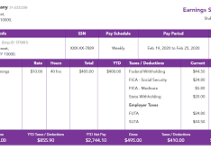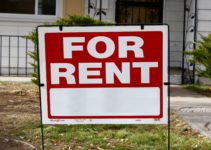Are you planning on getting started with investing in multifamily but you’re also wondering what makes a multifamily property?
There’s no doubt that real estate is an excellent way to earn passive income every month while building wealth but it may also be confusing for some investors who haven’t invested in multifamily properties before.
The good news is that multifamily properties are not a complicated real estate investment, they are in reality one of the best cash-producing real estate assets on the market today.
In this article, I’ll break down what makes a multifamily property, and offer you several tips on how to find your first multifamily real estate investment.
What Makes A Multifamily Property? Here’s What To Look For
In 2021, a multifamily property can be any property that has more than one dwelling. These properties are often classified as duplexes, triplexes, condos, and apartment buildings.
Multifamily properties have been in existence for decades now and it’s easy to find them all across the United States but keep in mind that not every multifamily property is created equal because multifamily properties are typically broken down into class types.
Class A Multifamily
Generally, a product built within the last 10 years
Properties with a physical age greater than 10 years but have been substantially renovated
High-rise product in select Central Business District may be over 20 years old
Commands rents within the range of Class “A” rents in the submarket
Well merchandised with landscaping, attractive rental office and/or club building
High-end exterior and interior amenities as dictated by other Class “A” products in the market
High-quality construction with the highest quality materials
Class B Multifamily
Generally, a product built within the last 20 years or an older property recently renovated
The exterior and interior amenity package is dated and less than what is offered by properties in the high end of the market
Good quality construction with little deferred maintenance
Commands rents within the range of Class “B” rents in the submarket
Class C Multifamily
Generally, a product built within the last 30 years or an older property recently renovated
Limited, dated exterior and interior amenity package
Improvements show some age and deferred maintenance
Commands rents below Class “B” rents in the submarket
The majority of appliances are “original”
Class D Multifamily
Generally, products over 30 years old.
Shorter remaining economic lives for the system components
No amenity package offered
Marginal construction quality and condition
The lower side of the market unit rent range, coupled with intensive use of the property (turnover and density of use) combine to constrain the budget for operations
More on crefcoa.com
Which Multifamily Class Type Is Right For You?
Obviously, as an investor, you want to purchase a property that’s going to be in demand but ultimately the decision on the property that you invest in is up to you but in an economy that’s in transition, most investors typically focus on investing in Class B and C multifamily properties versus Class A properties.
Why Class B and C multifamily properties? These properties are always in demand and whenever we see a dip in the economy, people who are living in Class A properties typically end up downgrading to Class B properties.
Some of the things that you should take into consideration when reviewing Class B and C multifamily properties include:
Age of Building
The age of a multifamily property will also influence its classification. Class A buildings tend to be newer (often, new construction), whereas Class B and Class C properties are usually older. Class C properties will usually be 20-30+ years old.
However, another exception to this “rule.” An older building, such as a historic property, can still earn Class A status if it meets the other criteria listed here. Older buildings are often gut renovated to include high-end finishes and other amenities akin to their newly-constructed peers. Age alone cannot determine a property’s class; it must be considered alongside the other factors.
Property Condition
A property’s condition is one of the leading factors of its class. A property that has been fully renovated and upgraded with high-end finishes is more likely to achieve Class A status than a multifamily property that is old, weathered, and in need of both cosmetic and structural repairs. As a result of property conditions, Class A and B properties tend to need less maintenance than Class C buildings.
Amenities
The larger the apartment community, the more robust the amenities will tend to be. Class B and Class C properties usually have fewer, if any, amenities to offer residents.
Occupancy
Class B and C properties usually have fewer desirable tenants (typically, people who earn less and with lower credit ratings) and may have more variable occupancy levels.
Of course, there are exceptions to this rule as well. Class B and Class C properties may also attract high-income earning professionals who are more cost-conscious than their peers. Often, people will rent more affordable Class B and Class C apartments while trying to save for a down payment on their own home.
More on gowercrowd.com
Contact Rent Portland Homes
Do you need property management for your multifamily properties? Rent Portland Homes can help! For a property management quote, contact us today by clicking here.



